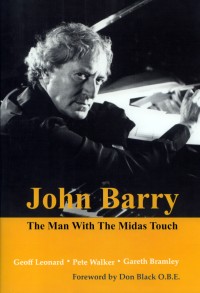Who Conducted What, and When, and Where for Chappells?
David Mardon seeks some answers
Older readers may recall that, shortly before his death on 7 September 1978, Charles Williams, conductor of the Queen’s Hall Light Orchestra, joined the Robert Farnon Society. During this period he was interviewed by the late Michael Maine, at one time the Editor of this magazine, and Charles explained how initially the Chappell recordings on single sided 78s (four sides per session) were recorded on Saturday mornings at EMI Special Studios between March 1942 and January 1943.
However there was then a ‘hiatus’ until 1944 when Charles Williams resumed recording at Levy’s Sound Studios in New Bond Street – not necessarily on Saturday mornings but on weekdays – mornings and afternoons – until the back end of 1946. These included several retakes of certain numbers.
It was shortly before 1947 that the Sidney Torch / Robert Farnon sessions commenced, with Torch conducting mornings and Farnon in the afternoons, back once again at EMI Studios with four sides per session. This was mentioned to me by the late Anthony Mawer (who was also an enthusiastic member of the RFS).
The last time I met Bob Farnon at the 80th Birthday Celebrations he expressed surprise that I had spotted that he did the afternoon shifts, with Sidney Torch in the mornings. He also explained that occasionally Torch would go in all day, presumably to do some New Century Orchestra recordings for Francis, Day & Hunter, using mostly the same musicians.
I then asked Bob why Chappells had moved from EMI to Decca at the Kingsway Hall for the recordings between C349 and C373. He couldn’t remember but did say that Chappells were not too keen on the recorded sound of the Decca ones, which included Comic Mystic, Oriental March, Gateway To The West and Manhattan Playboy, as well as the two dance band 78s which he conducted, although he himself was quite satisfied with the results.
So from Goodwood Galop to Huckle Buckle and the C387 of Hubert Clifford’s Epic Story/Heavy Industry it was back to EMI Studios, at which point the Musicians’ Union ban stopped future recordings in Britain for many years.
I have no idea who decided which compositions by other composers were allocated to which conductor. But in the case of Gideon Fagan all of his five compositions recorded during the second half of 1947 were conducted by Bob, because he wanted to be present at the sessions. Fagan was conducting Grieg’s "Song Of Norway" at the time in London, and would be free most afternoons. Also I have no idea why Philip Green conducted just one Chappell side – C273 Valse D’Amour by Tony Lowry.
This feature appeared in the August 2013 issue of ‘Journal Into Melody’


